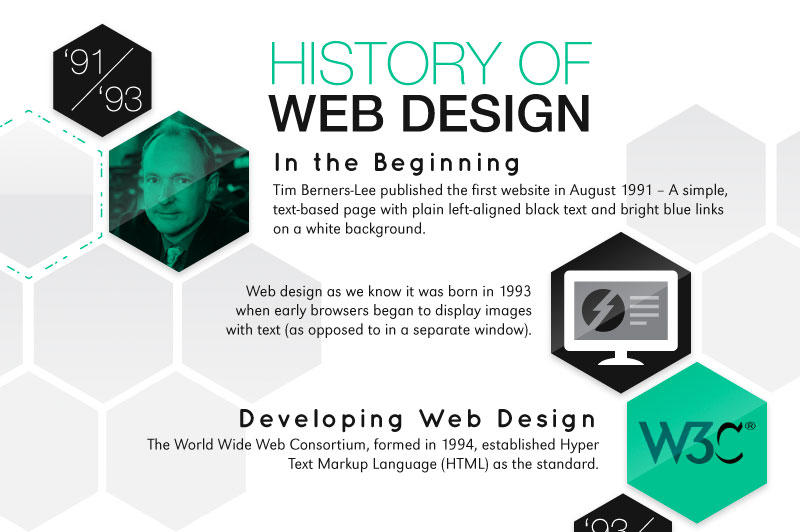Get Ready To Journey With Time And Uncover How Internet Sites Have Ended Up Being More Advanced, Straightforward, And Visually Stunning
Get Ready To Journey With Time And Uncover How Internet Sites Have Ended Up Being More Advanced, Straightforward, And Visually Stunning
Blog Article
Post Writer-Tobiasen Lunde
In the past, sites were basic and focused on details. Navigation was direct, and style was for desktop computers. Currently, https://www.techzone360.com/topics/techzone/articles/2022/05/20/452396-5-content-creation-tips-successful-digital-marketing-agencies.htm is essential. Data overviews designs for simple navigation. Responsive designs match different tools. Today, dark mode decreases pressure, and minimal food selections boost navigating. Interactive functions involve customers, and strong visuals attract attention. AI assimilation increases engagement. See how layout has advanced to improve your online trip.
Very Early Days of Web Design
In the early days of web design, simpleness reigned supreme. Sites were fundamental, with minimal colors, font styles, and designs. The emphasis got on giving information rather than fancy visuals. Customers accessed the web through slow-moving dial-up connections, so rate and capability were crucial.
Navigation food selections were straightforward, usually located at the top or side of the web page. Web sites were developed for home computer, as mobile surfing had not been yet prevalent. Web content was king, and designers focused on simple readability over complicated style elements.
HTML was the key coding language used, and developers needed to function within its restraints. Computer animations and interactive features were marginal contrasted to today's criteria. Web sites were static, with little vibrant content or customized individual experiences.
Increase of User-Focused Style
With the advancement of internet site design, a change towards user-focused style principles has actually become increasingly famous. Today, producing web sites that prioritize customer experience is essential for involving site visitors and accomplishing business objectives. User-focused style involves recognizing the demands, preferences, and habits of your target audience to tailor the web site's design, web content, and includes as necessary.
Developers currently perform thorough research study, such as customer surveys and usability screening, to collect insights and feedback directly from customers. https://inc42.com/resources/how-to-leverage-digital-marketing-to-drive-sales-on-ecommerce-marketplaces/ -driven approach assists in producing user-friendly navigating, clear calls-to-action, and aesthetically enticing user interfaces that reverberate with visitors. By positioning the user at the center of the style procedure, websites can supply a more individualized and pleasurable experience.
Receptive style has likewise emerged as a vital aspect of user-focused design, making sure that web sites are maximized for numerous tools and display sizes. This versatility improves access and usability, catering to the diverse ways users connect with internet sites today. Fundamentally, the increase of user-focused layout represents a change towards creating digital experiences that prioritize the requirements and expectations of the end individual.
Modern Trends in Web Design
Check out the latest patterns shaping website design today. One famous pattern is dark setting design, offering a sleek and modern-day appearance while minimizing eye stress in low-light settings. Another crucial fad is minimal navigating, simplifying menus and boosting customer experience by focusing on essential elements. Incorporating micro-interactions, such as animated buttons or scrolling results, can develop a much more engaging and interactive website. Responsive layout remains crucial, ensuring seamless user experiences throughout different tools. In addition, making use of vibrant typography and unbalanced formats can add visual rate of interest and draw attention to details content.
Incorporating AI modern technology, like chatbots for consumer assistance or tailored suggestions, improves customer engagement and improves processes. Access has likewise become a considerable pattern, with designers focusing on comprehensive style techniques to cater to varied individual needs. Welcoming sustainability by maximizing site efficiency for speed and performance is another arising pattern in web design. Collaborating with customer feedback and information analytics to iterate and enhance style continuously is crucial for staying pertinent in the ever-evolving electronic landscape. By accepting these modern patterns, you can develop a visually attractive, straightforward site that reverberates with your target market.
Conclusion
As you assess the evolution of internet site design from the early days to now, you can see exactly how user-focused design has actually become the driving force behind modern trends.
Accept the journey of change and adaptation in website design, constantly maintaining the customer experience at the center.
Tippingpointdigital
Stay current with the current fads and modern technologies, and never ever quit advancing your strategy to create visually stunning and straightforward web sites.
Progress, adapt, and develop - the future of web design is in your hands.
